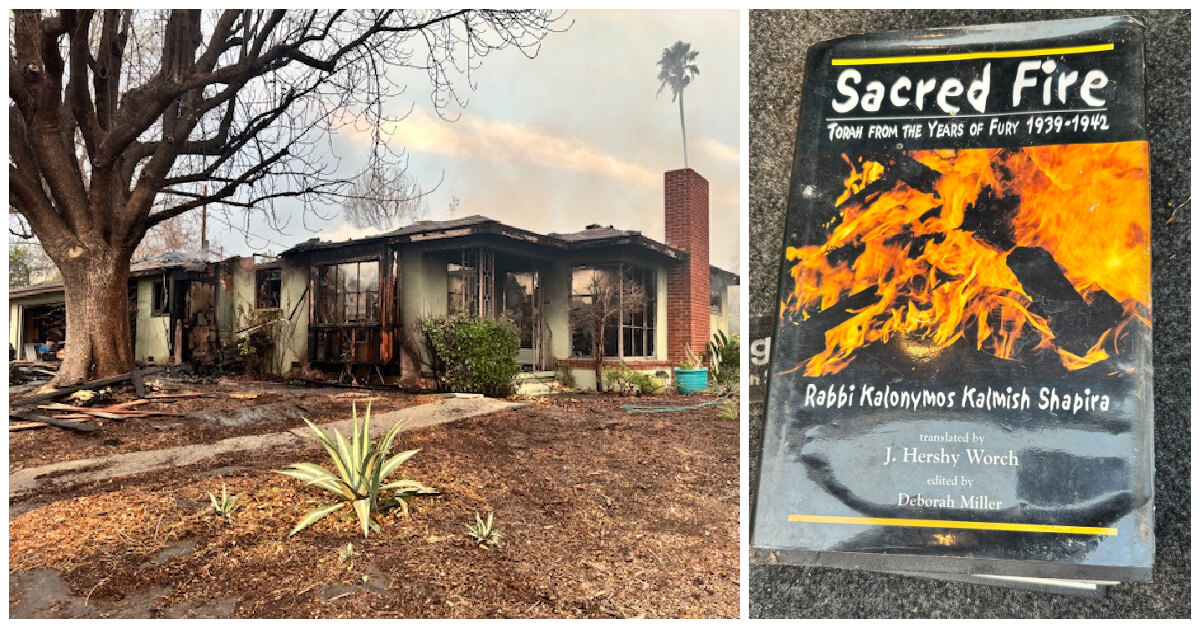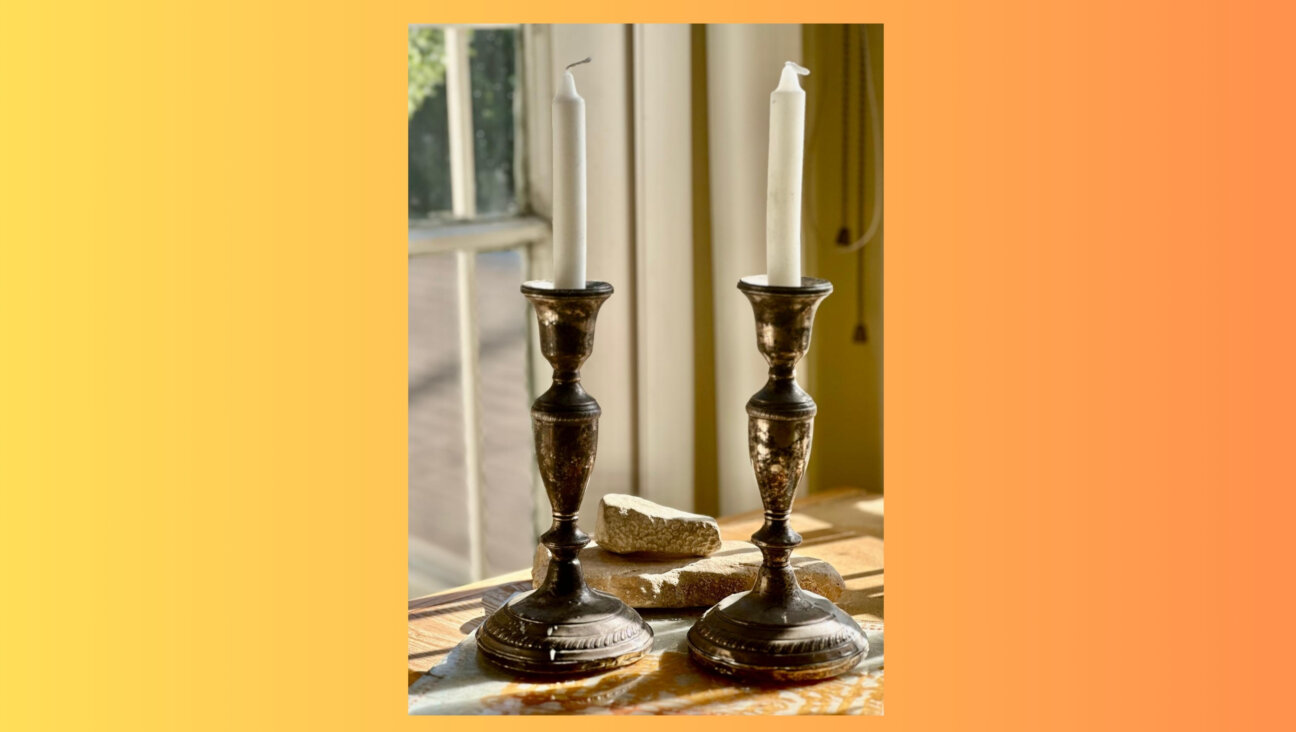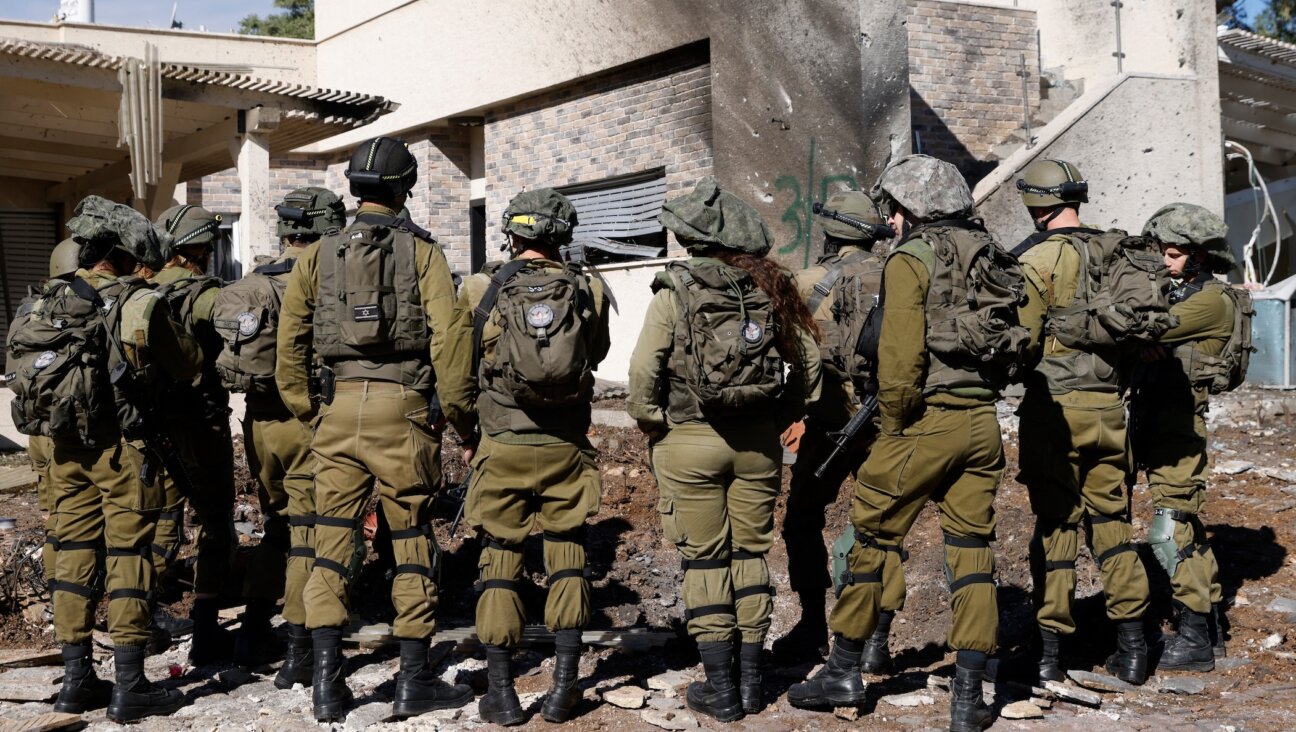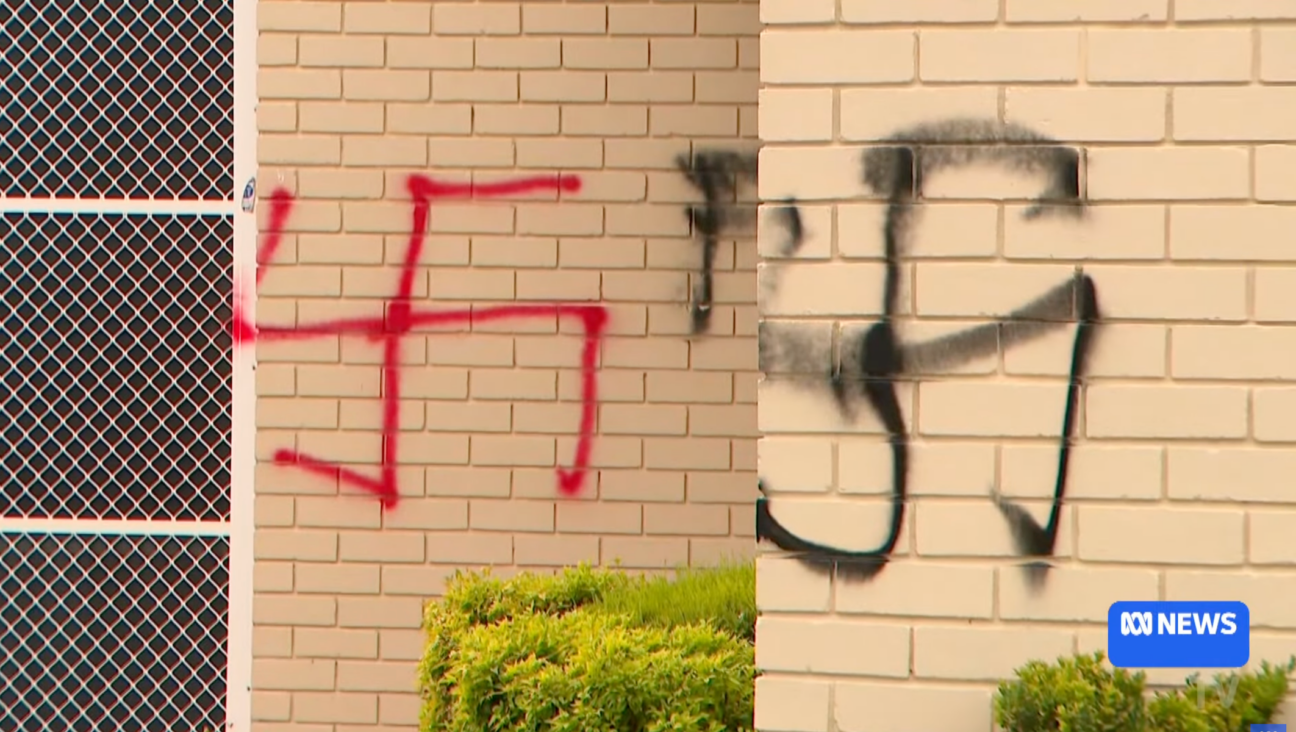Retrieving the Past, One Tombstone at a Time
It’s hard enough to distinguish Hebrew letters on a weathered old gravestone — all those hays that might be chets, the vavs resembling zayins and the dalets long melted into reshes. It’s even harder when the gravestone is on the other side of the world and all you have to go on is a digital photo.
Madeleine Isenberg, 62, is a business process analyst in California. She carries on a surprising partnership with a man she’s never met and whose voice she’s never heard: Mikulas (Miki) Liptak, 48, a Christian book publisher in Slovakia. Since 2004, Liptak has been photographing the Jewish gravestones in the cemeteries of Kezmarok and Huncovce, Slovakia, and e-mailing them to Isenberg for translation. Their goal is to translate every readable stone in both cemeteries and then, if resources permit, to continue on with other cemeteries. They completed the translation of more than 500 readable stones in Kezmarok in 2004 and are nearly done with the 400-plus readable headstones in Huncovce. Isenberg’s great-great grandmother is buried in Kezmarok.
The pair’s biggest discovery so far was the gravestone of a descendent, probably a granddaughter, of the renowned Rabbi Chatam Sofer of Bratislava. To Isenberg’s amazement, this thrilled Liptak as much as it did her. Two encounters — both with Jews — led Liptak to immerse himself in the lost world of Jewish Slovakia. The first was with Jesus. Following a born-again experience as a young man, Liptak started reading the Bible. He said he learned from it that the Jews are God’s Chosen People.
The second encounter was with Shaul Gassner. Born in Kezmarok, Gassner survived the Holocaust and is responsible for sparking Liptak and Isenberg’s partnership; he is married to Isenberg’s cousin Rina and lives in Israel. In 1999 he returned for the first time to Kezmarok, along with his wife. During their visit, the Gassners toured an old church where Liptak was serving as a guide. “Then we talked a little,” Liptak recalled. “It was so interesting for me — meeting a Jew, who lived there. So I wanted to know more about his life story. And he invited me to his hotel… and he spoke to me so many details…. He mentioned by name maybe every Jewish family; they lived here. He drew by heart a map of the town with all the names he remembered after 50 years…. And his wife said to me, ‘This he did not told even to his sons.’” Since then Liptak has visited the Gassners in Israel several times.
It was Liptak who wanted to identify everyone buried in the Kezmarok cemetery. “I offered to translate a few, like putting your toe in the ocean to test the water,” Isenberg writes. “At first, I tried translating everything on the stone. While my Hebrew is pretty good, the beautifully poetic phrasing sometimes becomes impossible to translate effectively. It was like trying to translate Shakespeare or Chaucer.” She switched to recording people’s names, the names of their fathers, their dates of death and occasional other data of interest. Isenberg warmed to the project and, eventually, she was hooked.
The legwork falls on Liptak. “Miki sends me what I call my ‘daily homework’ of five to 10 tombstones per day,” Isenberg said. The assignment takes her an hour-and-a-half to complete each night. To get the job done, she relies on her knowledge of names and Yiddish conventions and on her penchant for puzzles. For the stones to be legible, the sun must hit them just so. “We need to note the possible time for each stone,” Liptak said, “then be there and hope no clouds will come…. We have to go there again and again when the results are not good enough.” He and Isenberg cross check the translations against information from state and regional registries. Liptak finances the project out of his own pocket, though he has applied for grants.
Sometimes names are written vertically
as acrostics, each letter starting a poetic verse, with enlarged letters at the end that form another name. Some stones bear engravings, like the hands of the Cohen, or a water pitcher for a Levite, or a weeping willow tree. The acronym on the stone, which turned out to be the name of of the Sofer’s granddaughter, had Isenberg stumped for a few days. What it stood for dawned on her when she was en route to a funeral.
Liptak said it’s conviction that keeps Isenberg chipping away at this task, a little every day, like an ant. “If it wasn’t for the hardships our ancestors went through,” Isenberg said, “we wouldn’t be here.… Sometimes, I contemplate what housework was like, or washing clothes, or personal cleanliness, or keeping the Jewish holidays, or how they traveled, if at all, from their shtetl environments, how they communicated with letters that may or may not have reached their destinations, sometimes never hearing again from family members once they left the shtetl, and how heartbreaking that must have been.” Isenberg and Liptak hope eventually to compile their photos and findings in a book written in three languages — Slovak, English and Hebrew.
A message from our Publisher & CEO Rachel Fishman Feddersen

I hope you appreciated this article. Before you go, I’d like to ask you to please support the Forward’s award-winning, nonprofit journalism so that we can be prepared for whatever news 2025 brings.
At a time when other newsrooms are closing or cutting back, the Forward has removed its paywall and invested additional resources to report on the ground from Israel and around the U.S. on the impact of the war, rising antisemitism and polarized discourse.
Readers like you make it all possible. Support our work by becoming a Forward Member and connect with our journalism and your community.
— Rachel Fishman Feddersen, Publisher and CEO






















